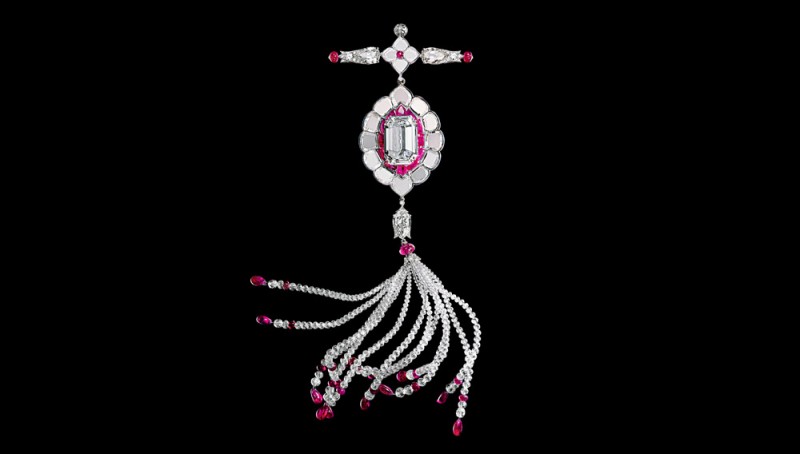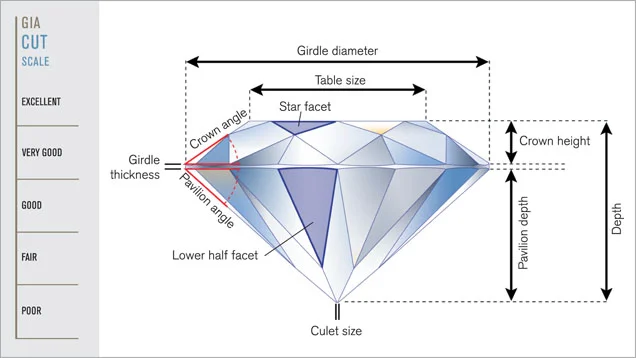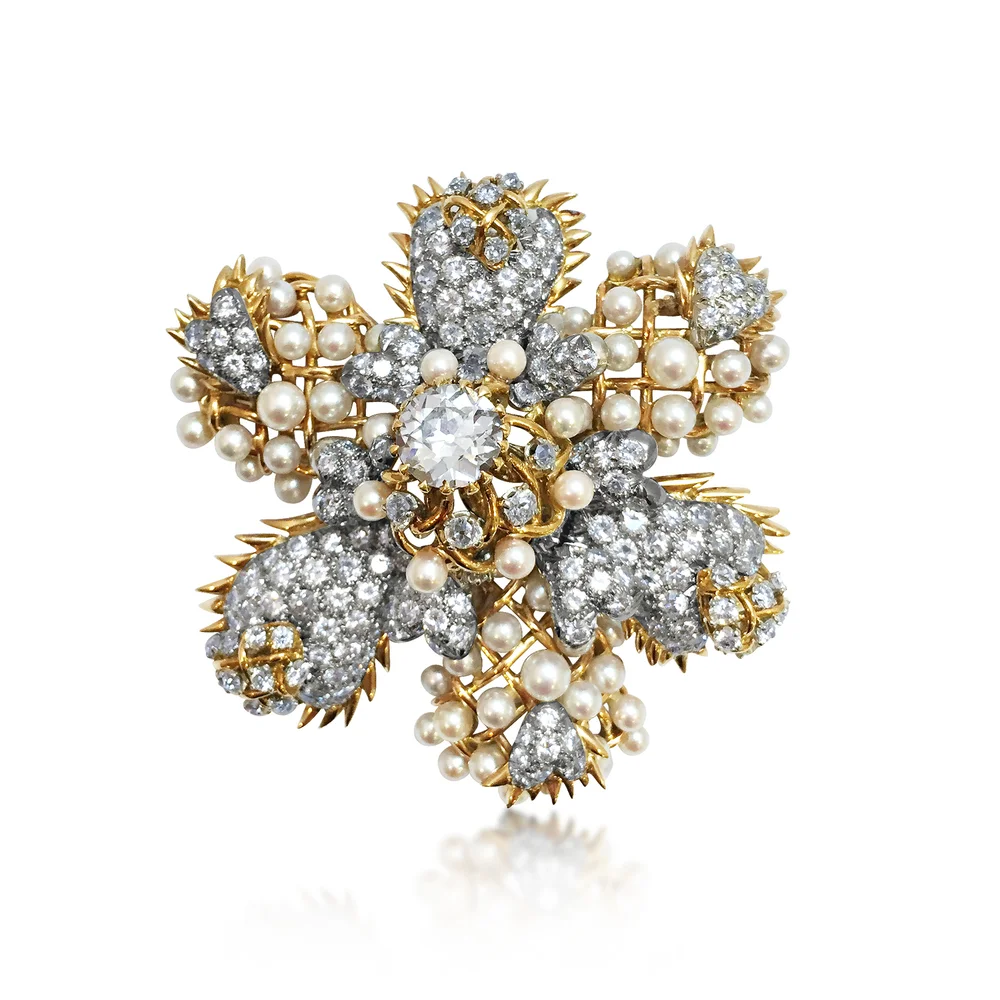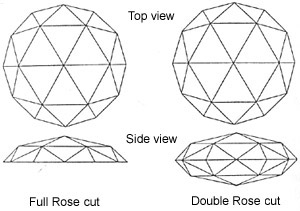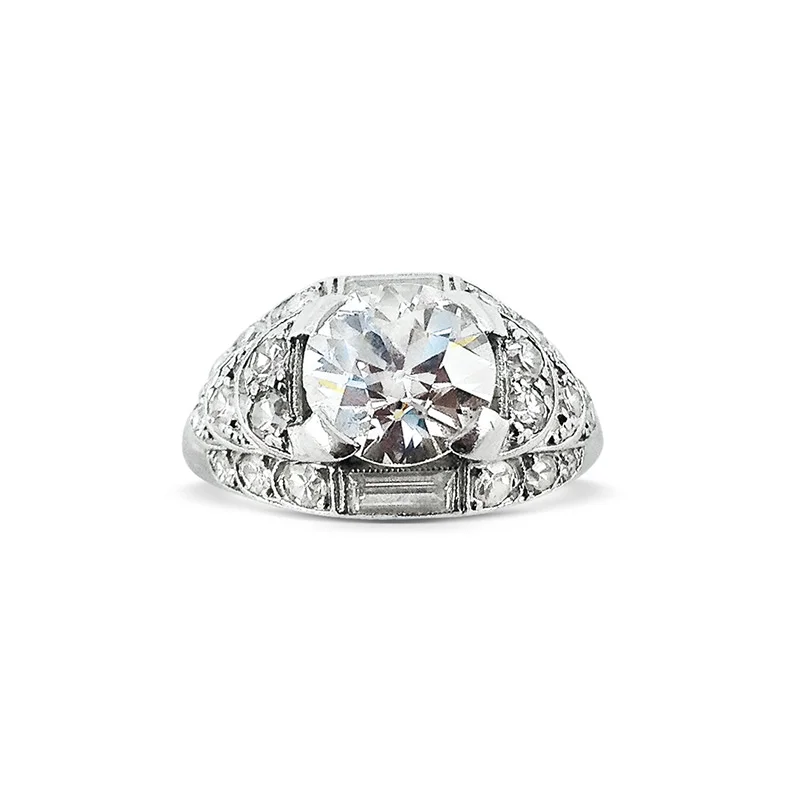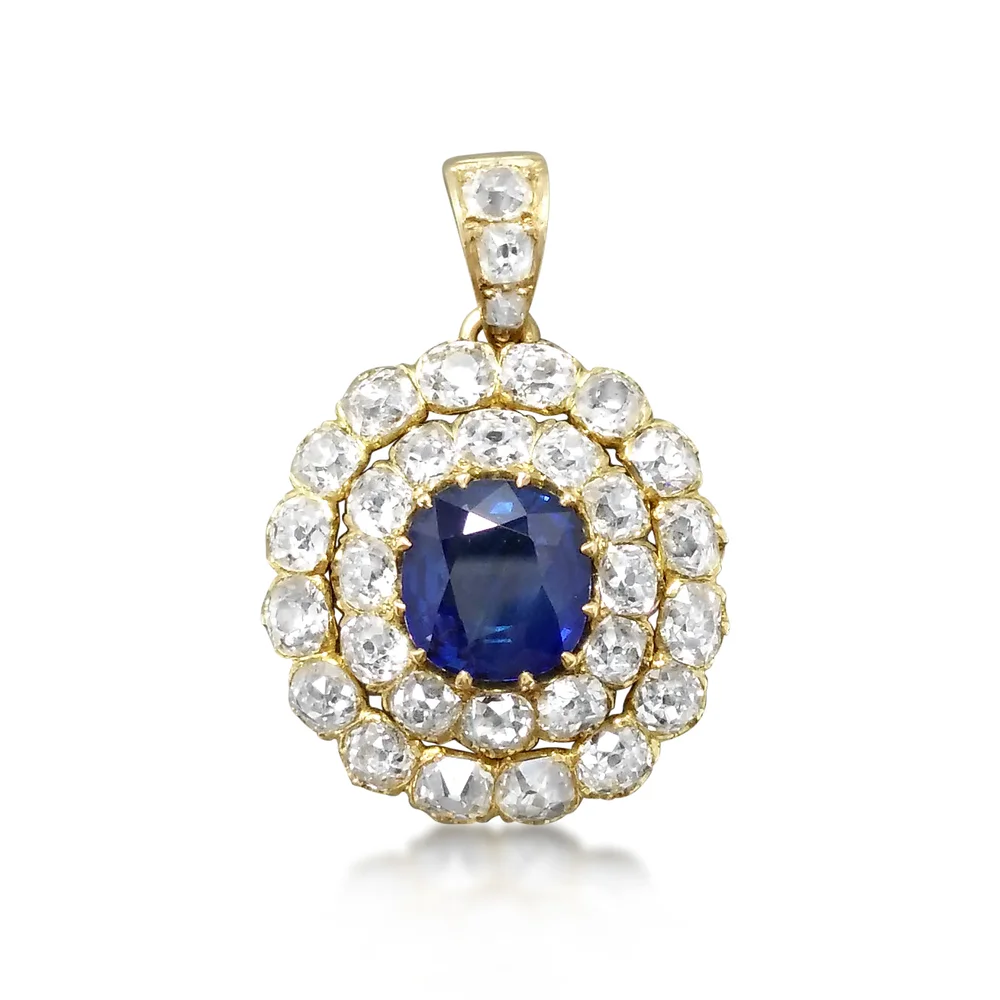The Beauty, Rarity and Value of Old Cut Diamonds
JAR Thread Ring, set with a 10.12-carat Old Mine Cut diamond, formerly owned by Ellen Barkin.
A large part of the allure of an antique or vintage piece of fine diamond jewellery is how charming and unique the stones look. So charismatic, in fact, that certain iconic modern-day jewellers like JAR (Joel Arthur Rosenthal) and Viren Bhagat prefer to use them for their one-of-a-kind creations.
A pair of JAR diamond bangles, formerly owned by Ellen Barkin.
A Viren Bhagat diamond and ruby pendant brooch, set with an old 10.03-carat Golconda diamond from India.
Even to the untrained eye, old cut diamonds possess a certain personality, and appear different from modern high-shine brilliants – they are bulkier, not perfectly symmetrical, has a softer sparkle and a gentler glow. A firm favourite of fine vintage jewellery collectors, such antique diamonds (see Diagram 1) are fast gaining in popularity and also becoming more valuable and expensive; the top-quality ones even achieving the same kind of prices as modern diamonds. Read on for a more detailed introduction to old cut diamonds.
Diagram 1: A representation of antique diamonds (courtesy of Portero.com).
Old Cut Diamonds: The Basics
There are three prized types of old cut diamonds: the Old Mine Cut, the Old European Cut, and the Rose Cut. The Old Mine Cut dates back to the 1700s and was popular especially during the Georgian and Victorian eras, up until the turn of the century. Bearing an off-round or cushion shape, it has a high crown, small table, large, flat culet, and a deep pavilion (see Diagram 2 for Anatomy of a Diamond).
The Old Mine Cut evolved into the Old European Cut, which has a circular shape, heavy crown, very small table, large and flat culet, and deep proportions. The direct predecessor of today’s modern round brilliant cut, the Old European Cut also has 58 facets. It dates back to the 1800s and was prevalent during the Victorian, Edwardian and Art Nouveau periods until the 1950s. Click here to watch a video by the GIA demonstrating the evolution of the diamond shape, from the Old Mine Cut to the Old European Cut to the Modern Brilliant.
Diagram 2: Anatomy of a diamond (courtesy of GIA)
Another noteworthy antique cut is the Rose Cut (see Diagram 3), which has seen a resurgence of interest a decade ago since celebrities started to buy them. An example is Matthew McConaughey, who proposed to his then-girlfriend with a Rose Cut diamond engagement ring. Despite not being well-known today, the Rose Cut was the pre-eminent diamond style, especially for engagement rings, in Europe from the 1500s all the way to the 1800s, through the Georgian and Victorian eras.
Diagram 3: A representation of Rose Cut diamonds
It features a flat bottom with a dome-shaped crown rising to a single peak – resembling the shape of a rose bud in general although it can be squarish-round, oval or pear shaped too. Rose Cut diamonds may have anywhere between 3 and 24 large, triangular facets, cut in a honeycomb-like pattern.
Old vs Contemporary: The Key Differences
The personality or charisma that estate/vintage jewellery dealers speak of when referring to old cut diamonds is a product of good old handcraftsmanship. Up until the early 1800s, diamond cutters of yore had to rely on their hands and eyes, and work without the benefit of motorised machinery or advanced tools like today’s precision lasers.
They followed the rough diamond’s octahedral shape and tried to retain as much of the original weight of the crystal as possible. Skill and experience were the key requirements in faceting and rounding out the stones to produce the brightest, whitest diamond – and no two stones were ever alike.
As a result, old cut diamonds are usually not symmetrical, differ wildly in proportions, and do not have uniform facets. When observing an old cut diamond up close, its light and dark pattern would typically be blocky or resemble a checkerboard. On the other hand, a modern brilliant diamond looks more icy, and would have a tighter, more splintery mosaic of light and darkness. Flashes from the facets of an old cut diamond can be seen more clearly and would be more triangular than the slivers of intense brightness from a contemporary diamond.
An antique bow brooch set with Old Mine Cut diamonds, circa 1890, previously sold at Revival Jewels
Antique stones are also typically not as white as modern stones, as the old diamond mines were largely from Brazil and Venezuela, which produce darker diamonds. The only exception were the very fine diamonds mined in India’s Golconda region. Today’s white stones tend to hail from new mines in the southern nationals of Africa. However, mounted old cut diamonds may appear whiter than their actual grades because their large culets do not trap colour within the stones.
A ring with an Old European Cut diamond, circa 1925, previously sold at Revival Jewels.
Old School, New Favourite
There is now renewed interest in Old Mine Cut, Old European Cut and Rose Cut diamonds, when most of these stones would have been re-cut just a decade ago. In fact, one dealer reported that prices between such old stones and new cut ones are now comparable, with top-quality old diamonds fetching even more than new stones. Another dealer said that demand has grown dramatically.
There are several reasons for this. For one, old cut diamonds are becoming increasingly scarce as a result of the past re-cutting of antique stones and consumer recognition that such diamonds have a heritage that is fast disappearing. Vintage/estate jewellery items with provenance, often made with diamonds, are also getting snapped up by the savvy consumer.
An antique pendant set with a blue sapphire surrounded by Old Mine Cut diamonds, previously sold at Revival Jewels
With society growing in sophistication and getting more technologically inclined, limited-production goods that are crafted by hand – ranging from watches and bags to clothing and cars – tend to become more desirable. Old cut diamonds are conflict-free, which is an important factor for some consumers and jewellers. And more understated and elegant jewellery is also making a comeback, after the preference for big, showy pieces of bling in the past few decades.
For those looking to invest in old cut diamonds, some advice: Avoid stones that are too deep as they will appear too small for their weight; and don’t buy those that have been drilled, girdle-polished during repair, or enhanced in any manner.



